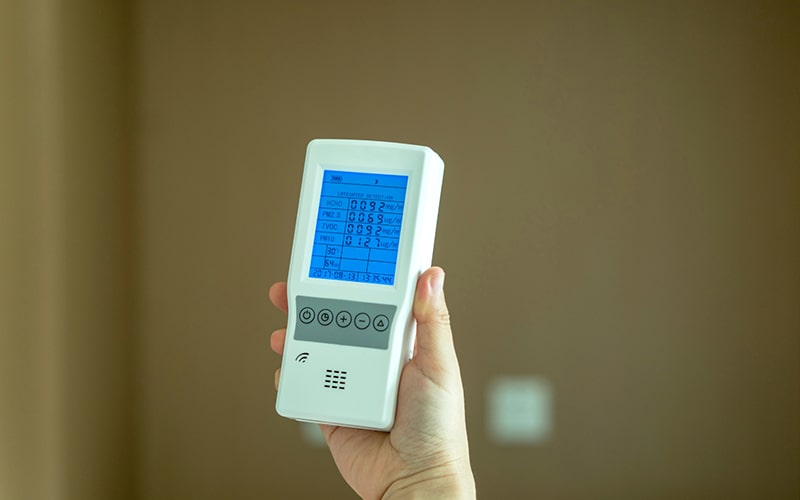
Testing for mold inside walls typically requires more invasive methods compared to surface
testing. Here are steps to test for mold inside walls:
Visual Inspection: Begin by conducting a thorough visual inspection of the walls, paying
attention to any visible signs of mold growth, water damage, or moisture issues. Look for
discoloration, staining, peeling paint, warping, or bulging areas, especially in areas prone to
moisture, such as bathrooms, kitchens, and basements.
moisture, such as bathrooms, kitchens, and basements.
Moisture Meter: Use a moisture meter to detect moisture levels within the walls. Elevated
moisture levels can indicate potential mold growth behind walls, even if no visible signs of mold
are present. Focus on areas where water leaks, plumbing issues, or condensation are suspected.
Infrared Camera: Consider using an infrared camera to detect temperature variations within the
walls. Cool spots may indicate areas of moisture accumulation, which can provide favorable
conditions for mold growth. Infrared cameras can help identify hidden moisture issues behind
walls.
Sampling: If visual inspection, moisture meter, or infrared camera indicate potential mold
growth, you may need to collect samples from inside the walls for testing. This typically involves
drilling small holes into the wall to access the interior and collect samples of material or dust for
analysis.
testing. These professionals have the expertise and equipment to safely access and collect
samples from inside walls and ensure accurate testing and analysis.
Laboratory Analysis: Samples collected from inside walls are sent to a certified laboratory for
analysis. A microbiologist will examine the samples under a microscope or use other techniques
to identify the types of mold present and assess the severity of contamination.
Interpretation of Results: Once the testing is complete, you’ll receive a report detailing the
findings and recommendations. If mold is identified inside the walls, the report may include
information on the types of mold present, the extent of contamination, and recommended
remediation steps.
Remediation: If mold is found inside the walls, it’s essential to take prompt remediation action
to address the problem. Depending on the extent of the contamination, remediation may
involve removing affected materials, drying the area, and addressing any underlying moisture
issues.
Testing for mold inside walls can be more complex and invasive compared to surface testing, so
it’s crucial to enlist the help of qualified mold inspection professionals for accurate assessment
and proper remediation. Early detection and prompt remediation are key to preventing further
damage and potential health risks associated with mold growth inside walls. Contact Austin
Mold Testing for help in finding out if you have mold in the walls of your home or office.

